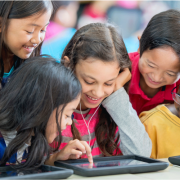Coding is an essential skill in today’s world, and it can open the door to a world of new opportunities. Whether you’re looking to become a professional programmer or just want to learn a few basic coding skills, this guide will help you get started. It covers the basics of coding and walks you through the steps of understanding the basics of coding, choosing the right language, setting up your environment, learning the syntax and structure of the language, practicing your skills with exercises, designing programs, debugging, and taking your skills to the next level.
Understanding the Basics of Coding
Before you can start coding, you need to understand the basics of coding. Coding is the process of writing instructions in a special language that tells a computer what to do. The instructions are written in a programming language, and the instructions are called code.
Programming languages allow you to control the behavior of a computer by writing instructions in a specific syntax. The instructions are written in a way that the computer can understand and execute. Some of the most popular programming languages include Java, C++, Python, and JavaScript.
Different Types of Programming Languages
There are many different types of programming languages, and each one has its own set of features and capabilities. For example, Java is an object-oriented language, which means that it allows you to create objects and manipulate them. C++ is a more powerful language, and it supports features such as pointers and templates. Python is a scripting language that is used for web development and data analysis. JavaScript is a popular language for creating dynamic web pages.
Choosing the Right Language
When choosing a programming language, it’s important to consider your goals and the type of project you’re working on. For example, if you’re creating a website, you might want to use HTML, CSS, and JavaScript. If you’re creating an app, you might want to use Java or Objective-C. If you’re creating a data analysis program, you might want to use R or Python.
Preparation: Setting Up Your Environment
Before you can start coding, you need to set up your environment. This involves downloading and installing a text editor and a programming language. The text editor is used to write your code, and the programming language is used to translate your code into instructions the computer can understand.
Learning the Language Syntax and Structure
Once you’ve set up your environment, it’s time to start learning the syntax and structure of the language. This includes learning the basic syntax, such as the data types, variables, and control structures. You also need to learn how to write functions and classes. This will allow you to create more complex programs.
Practicing Your Skills with Exercises
Once you’ve learned the basics of the language, it’s time to practice your skills with exercises. This can include writing simple programs or even creating your own projects. This will help you develop your skills and get familiar with the language.
Designing Programs
Once you have a good understanding of the language, it’s time to start designing programs. This involves planning out the program, writing the code, testing the program, and making changes as needed. This process can take some time, but it’s essential for creating efficient and reliable programs.
Debugging
Debugging is an important part of the coding process. This involves identifying and resolving errors in the code. This can involve running the program, testing the code, and making changes as needed. It’s important to take your time and thoroughly test the code to ensure it works as expected.
Taking Your Skills to the Next Level
Once you have a good understanding of the language and have written some programs, it’s time to take your skills to the next level. This can include learning more advanced concepts such as data structures, algorithms, and software design. You can also explore new languages and technologies to further expand your skills.
Conclusion
Coding is an essential skill in today’s world, and it can open up a world of new opportunities. Whether you’re looking to become a professional programmer or just want to learn a few coding basics, this guide has helped you get started. It has covered the basics of coding and walked you through the steps of understanding the basics of coding, choosing the right language, setting up your environment, learning the syntax and structure of the language, practicing your skills with exercises, designing programs, debugging, and taking your skills to the next level. With dedication and practice, you can become an expert coder in no time!
One interesting application of coding is the generation of QR codes. QR (Quick Response) codes are two-dimensional barcodes that can be scanned using a smartphone or a QR code reader to quickly access information or perform specific actions. These codes are widely used in various fields, including marketing, advertising, inventory management, and more. By learning how to make Qr code through coding, you can add a valuable skill to your repertoire.

















Comments